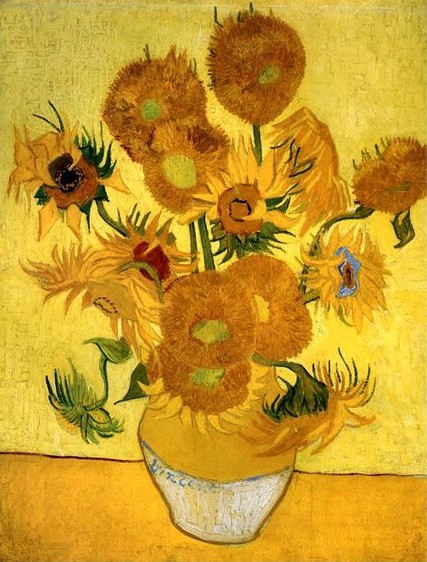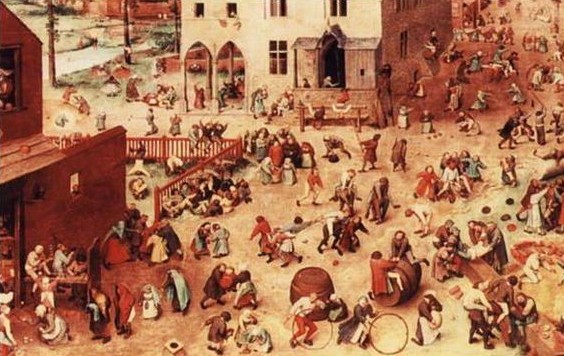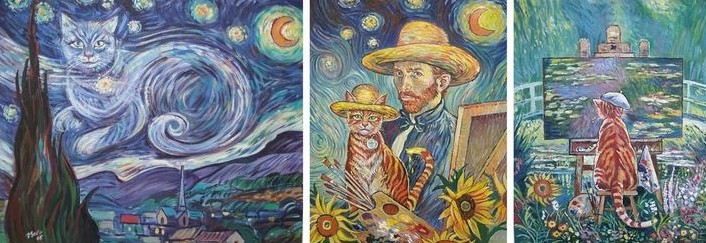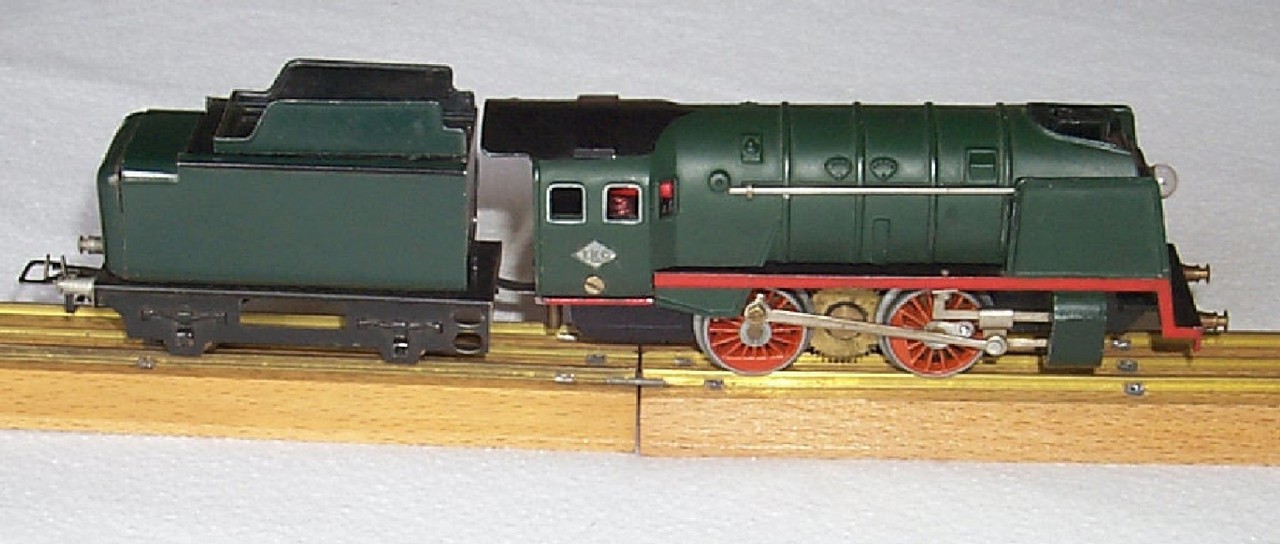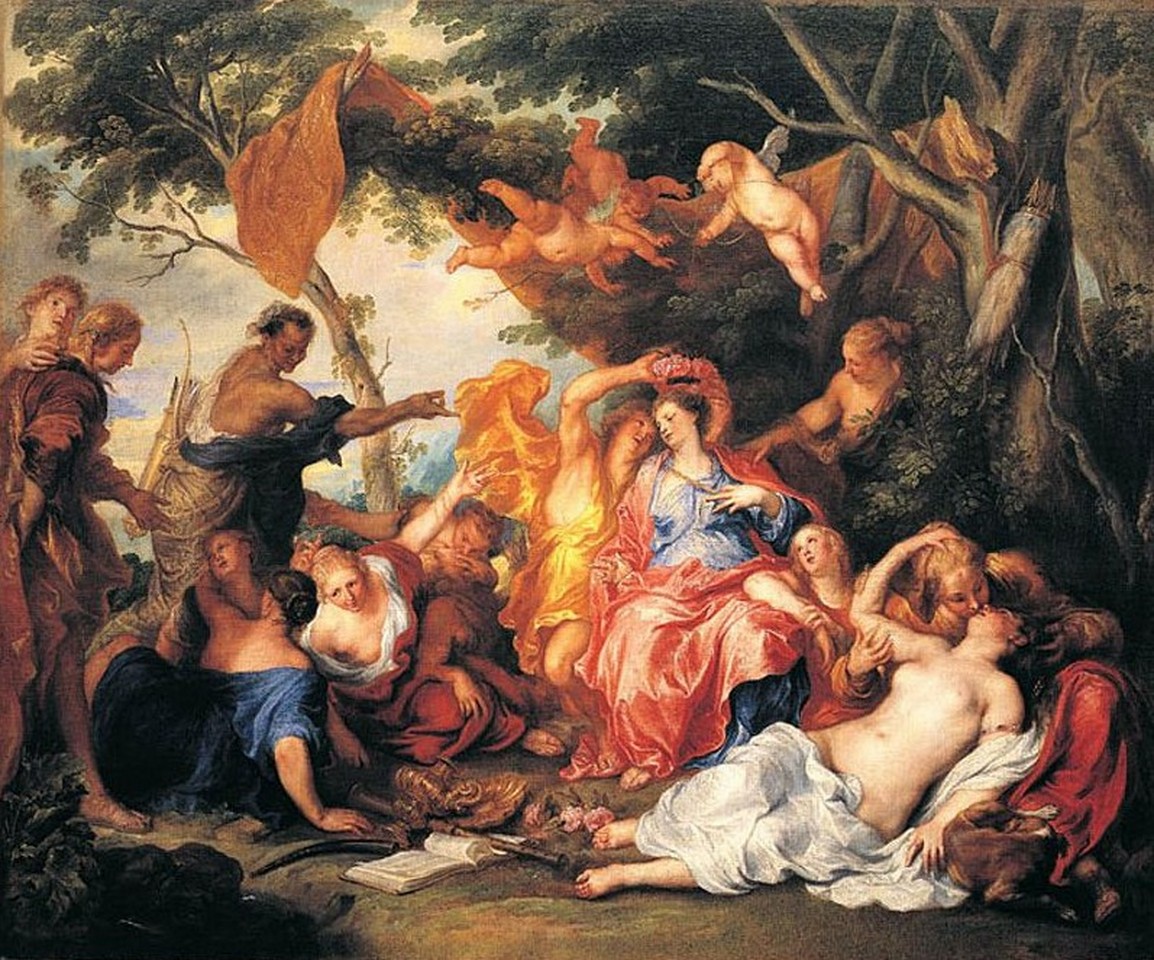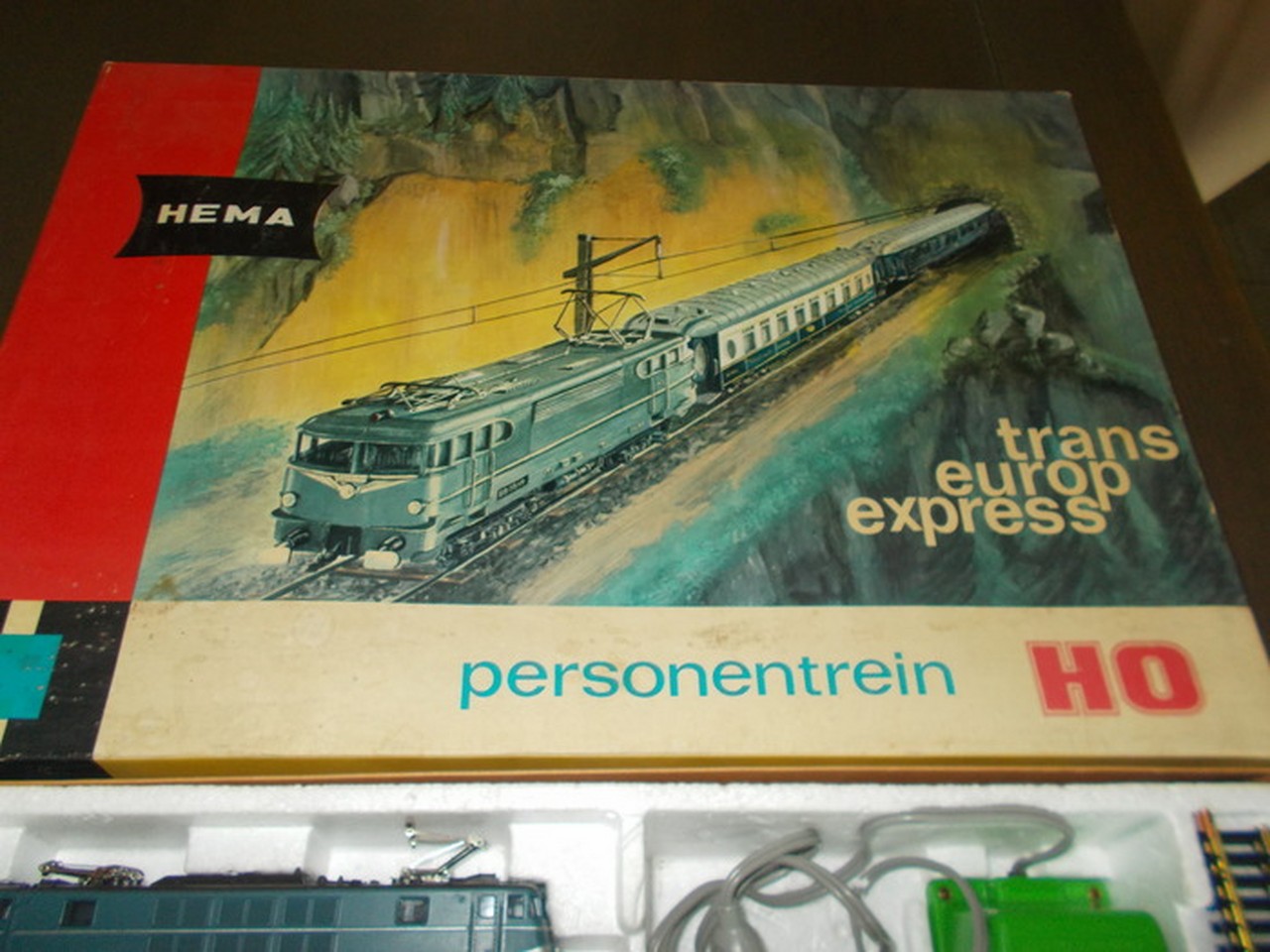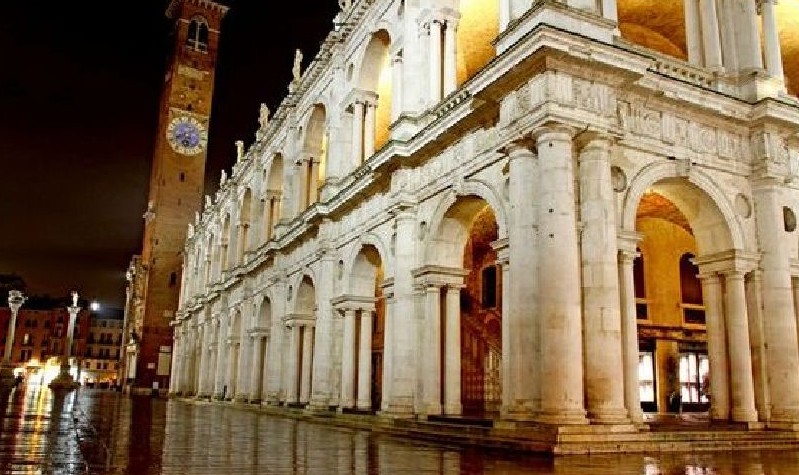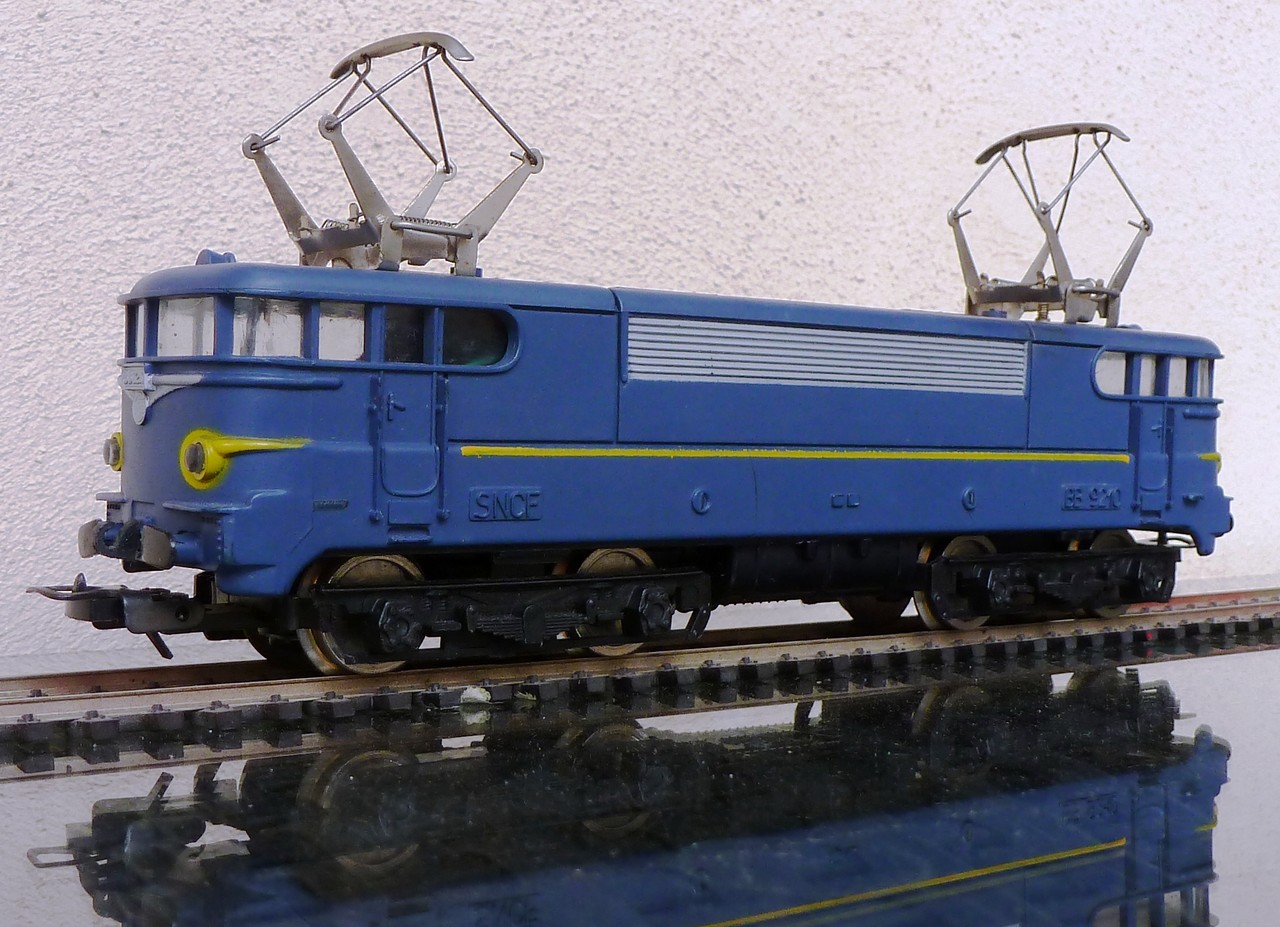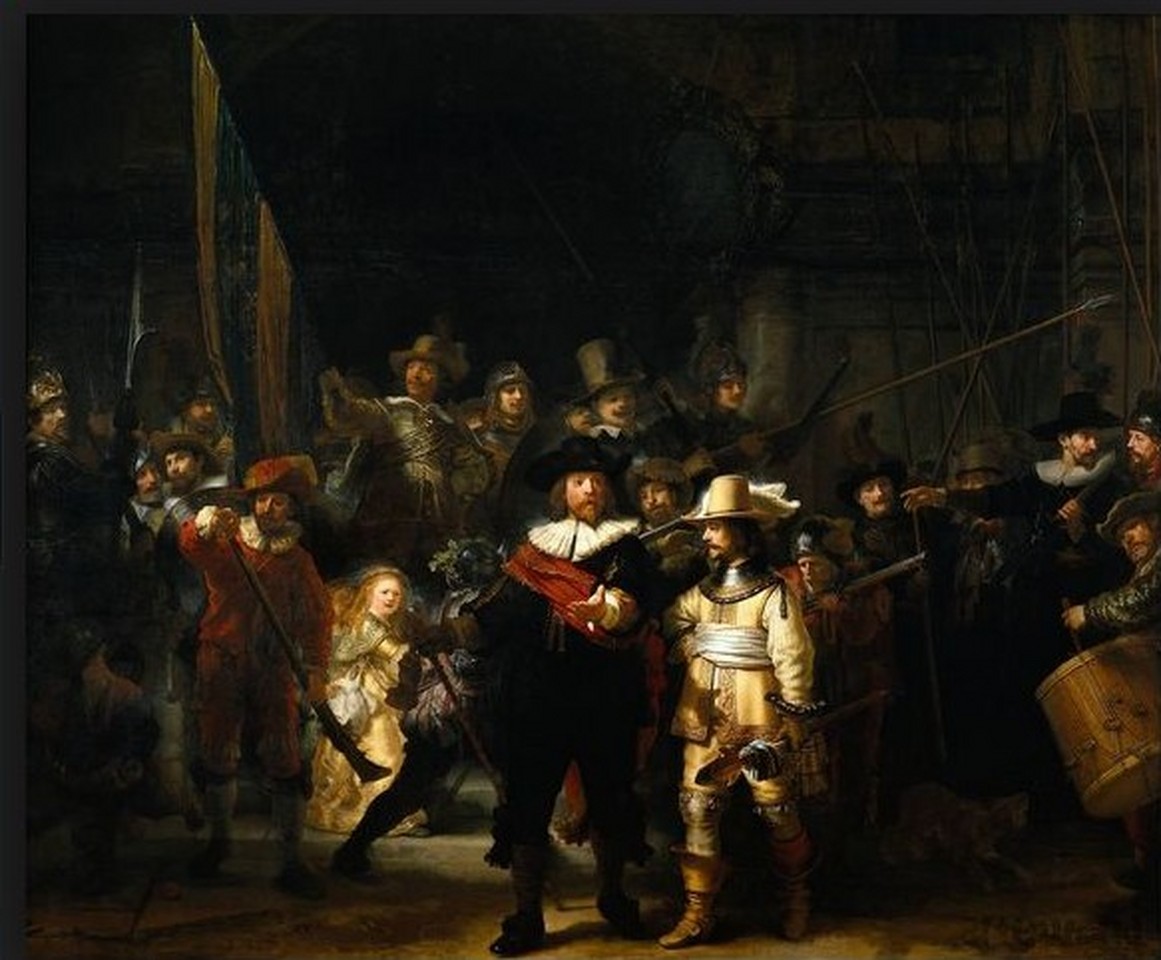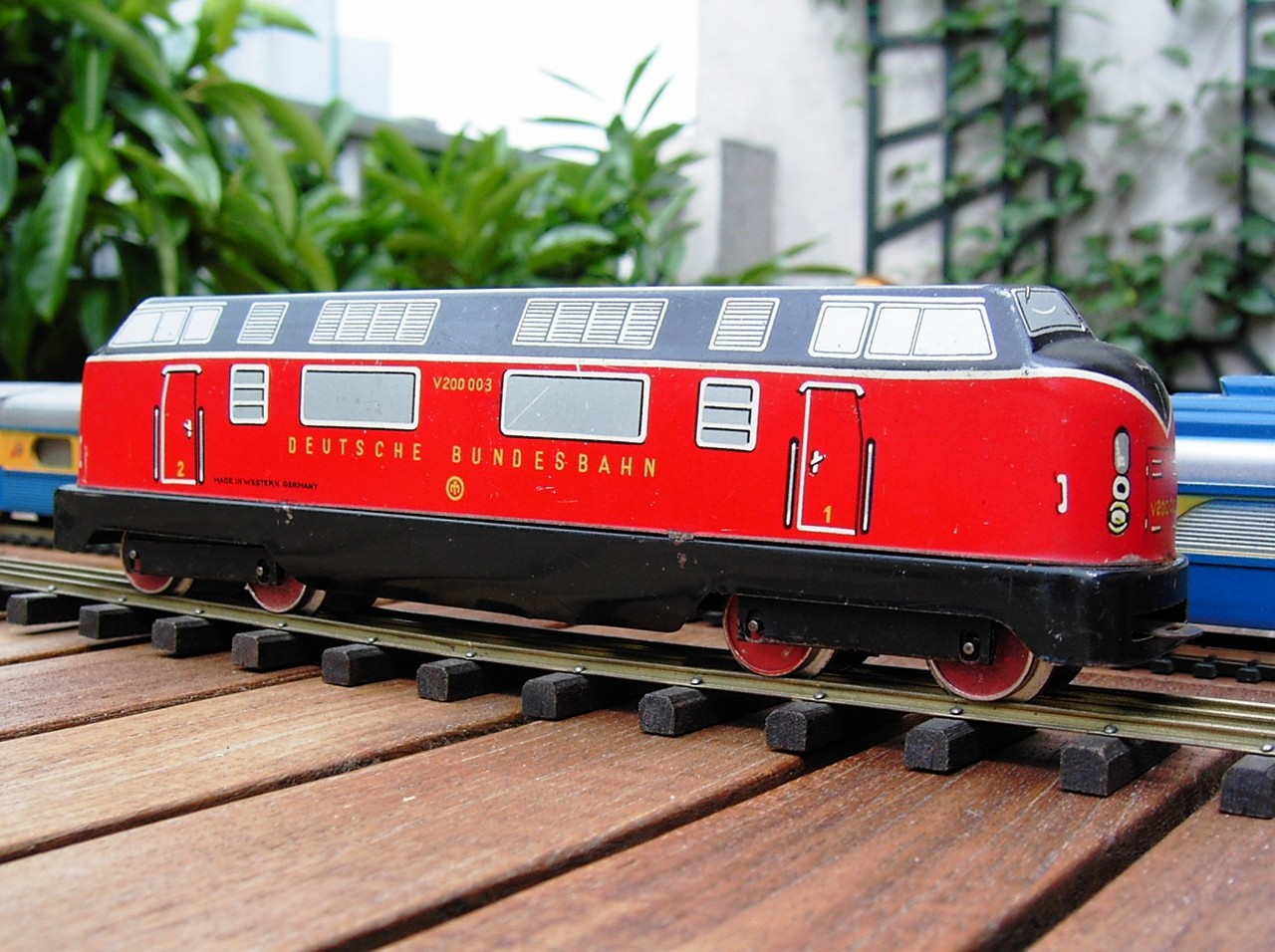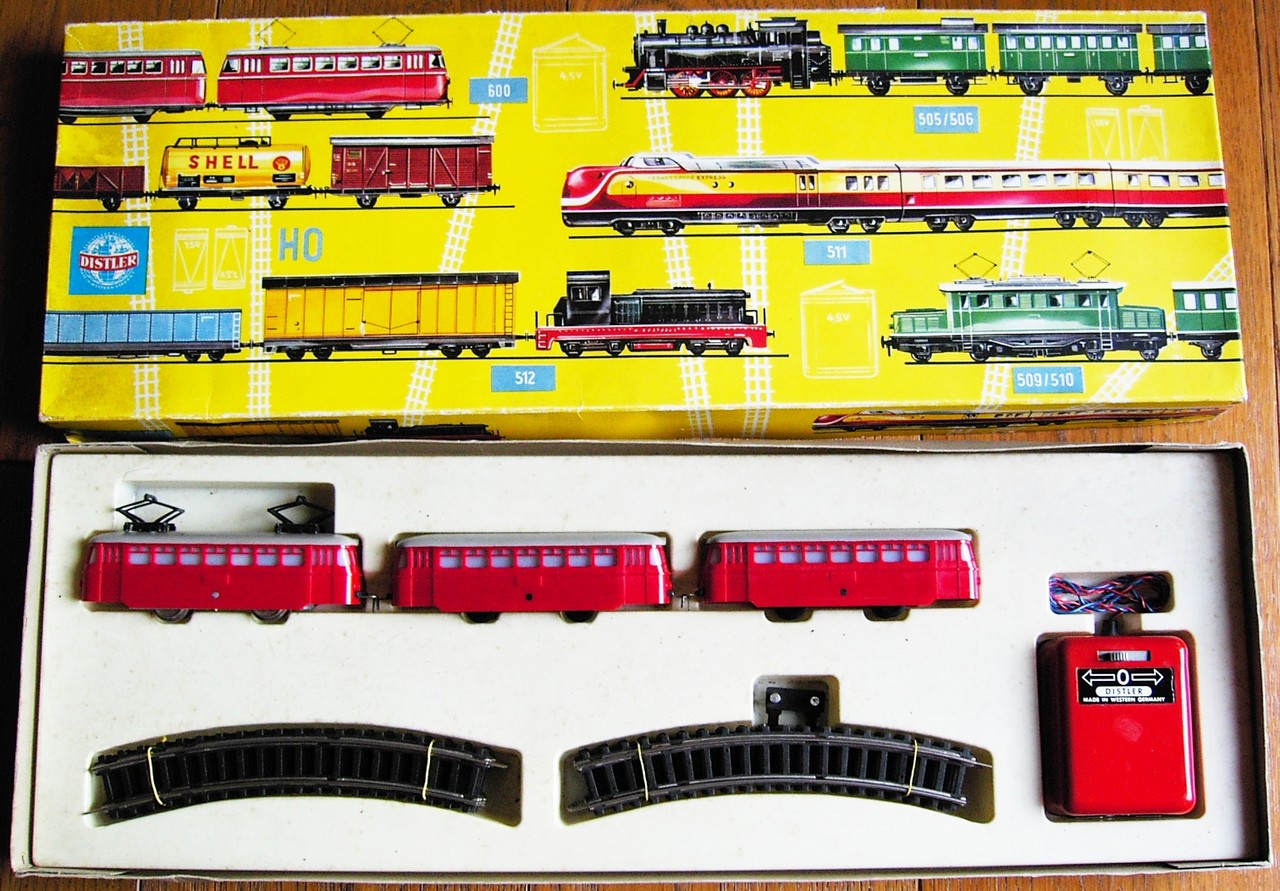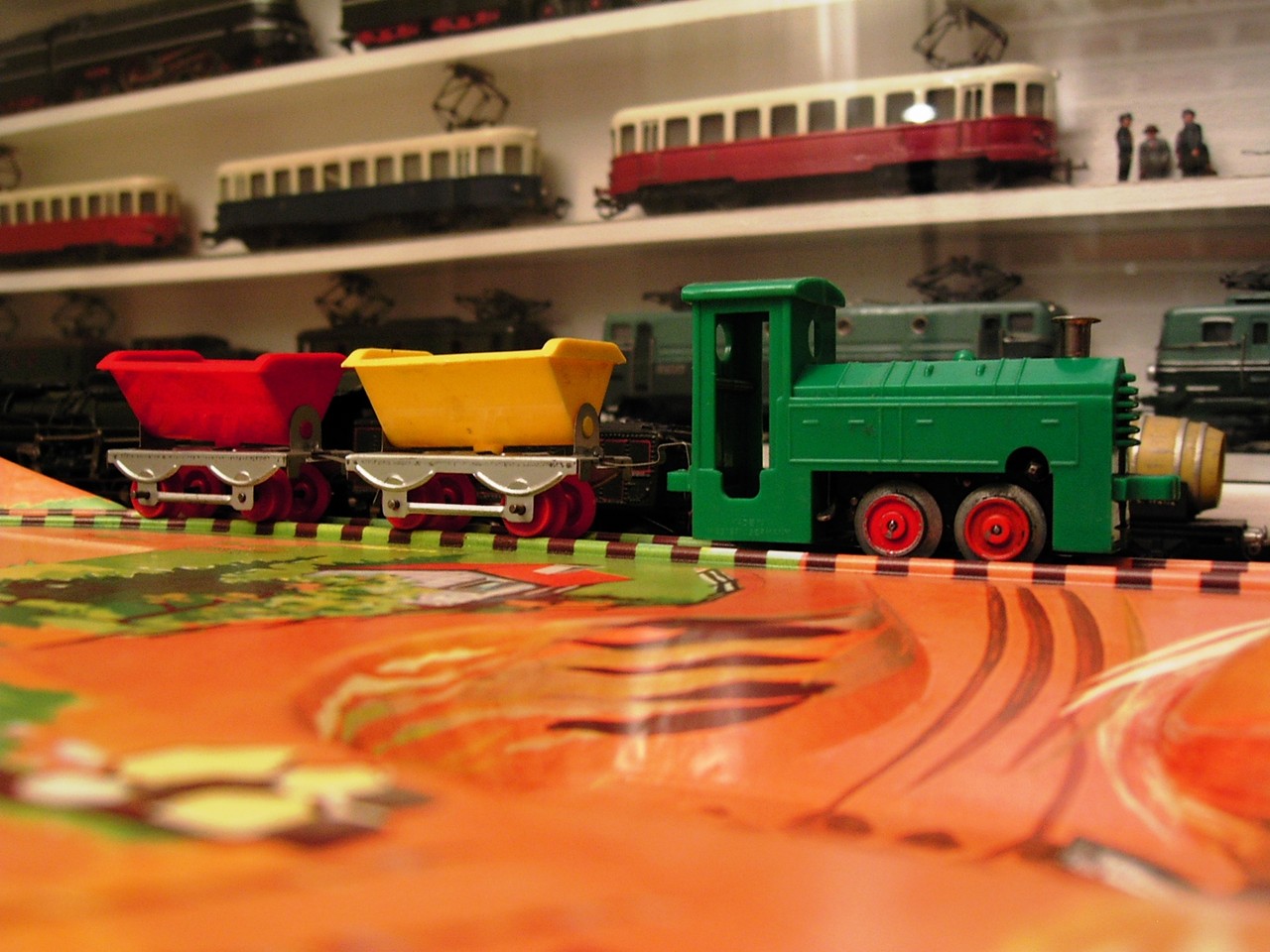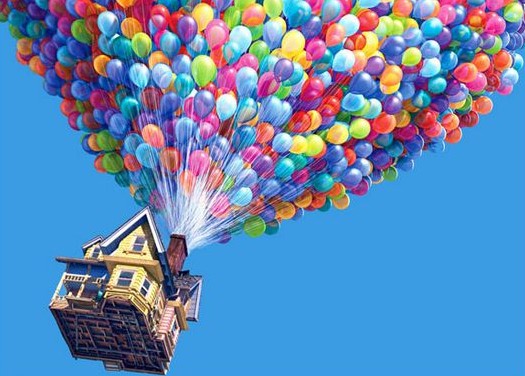Flemish trains HO in the 40s and 60s
(Written by P.G.)
The Flemish countries were not as prolific in producing miniature trains than they were in the art, especially in painting.
The first Flemish train in scale HO / OO was produced in Brussels by ELEC in September 1946.
It is sold at first only in complete packaging
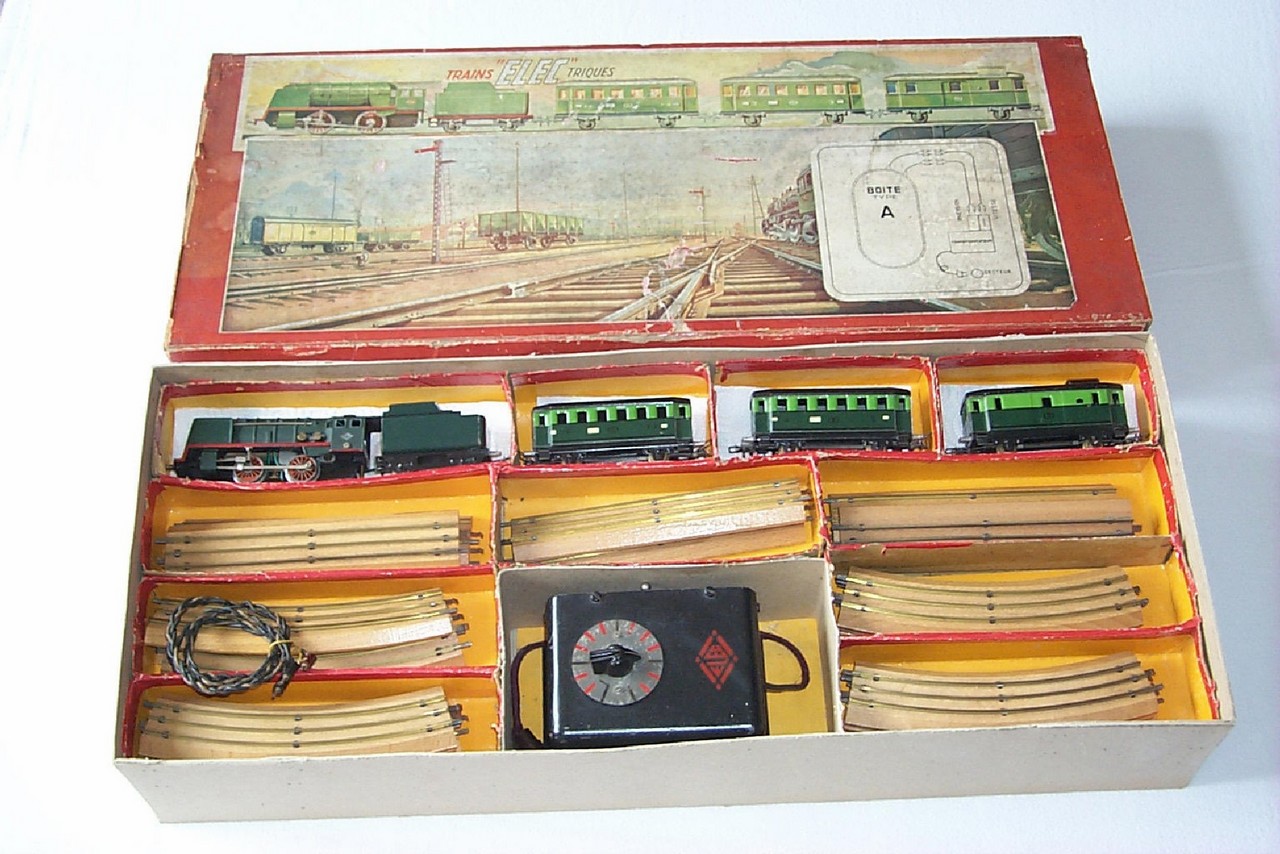 then at singles pieces.
then at singles pieces.
The tracks have a base in milled wood, the rails are made of brass, the locomotive
has a mechanism similar to the two axes of the series 800 of Maerklin, but the inversion system is like to the first Conti and the locomotive changes direction of travel depending on the side rail with which it is powered.
The vehicles with two axles, inspired by the material of the SNCB of the time, are in metal veneer, enamelled in two tones of green and annealed
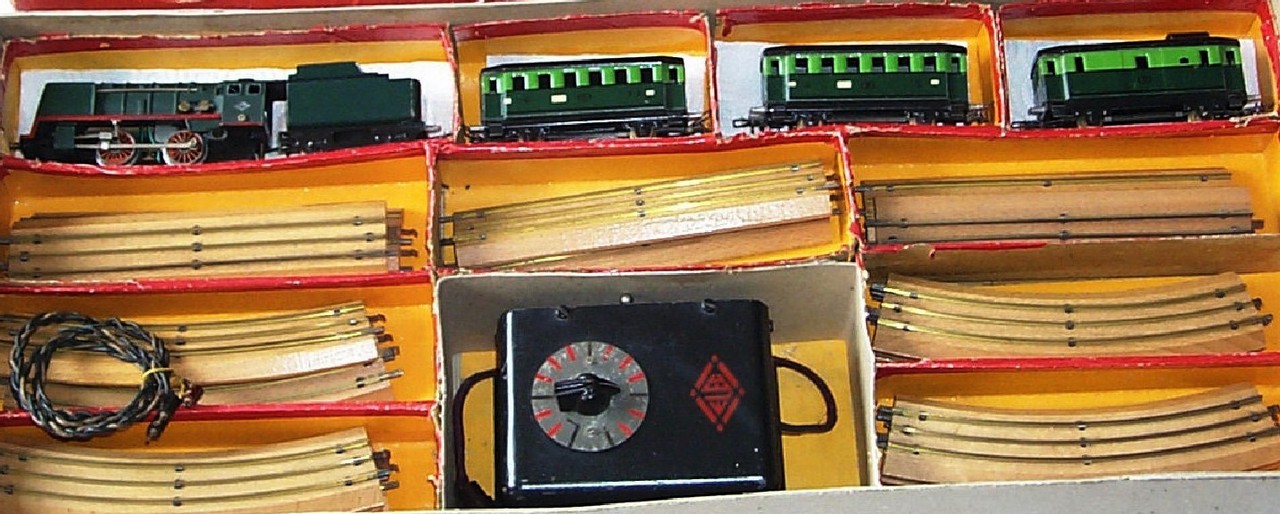
ELEC already disappeared before 1950, you have to wait for the ‘beginning of the’ 60s to find again Flemish trains.
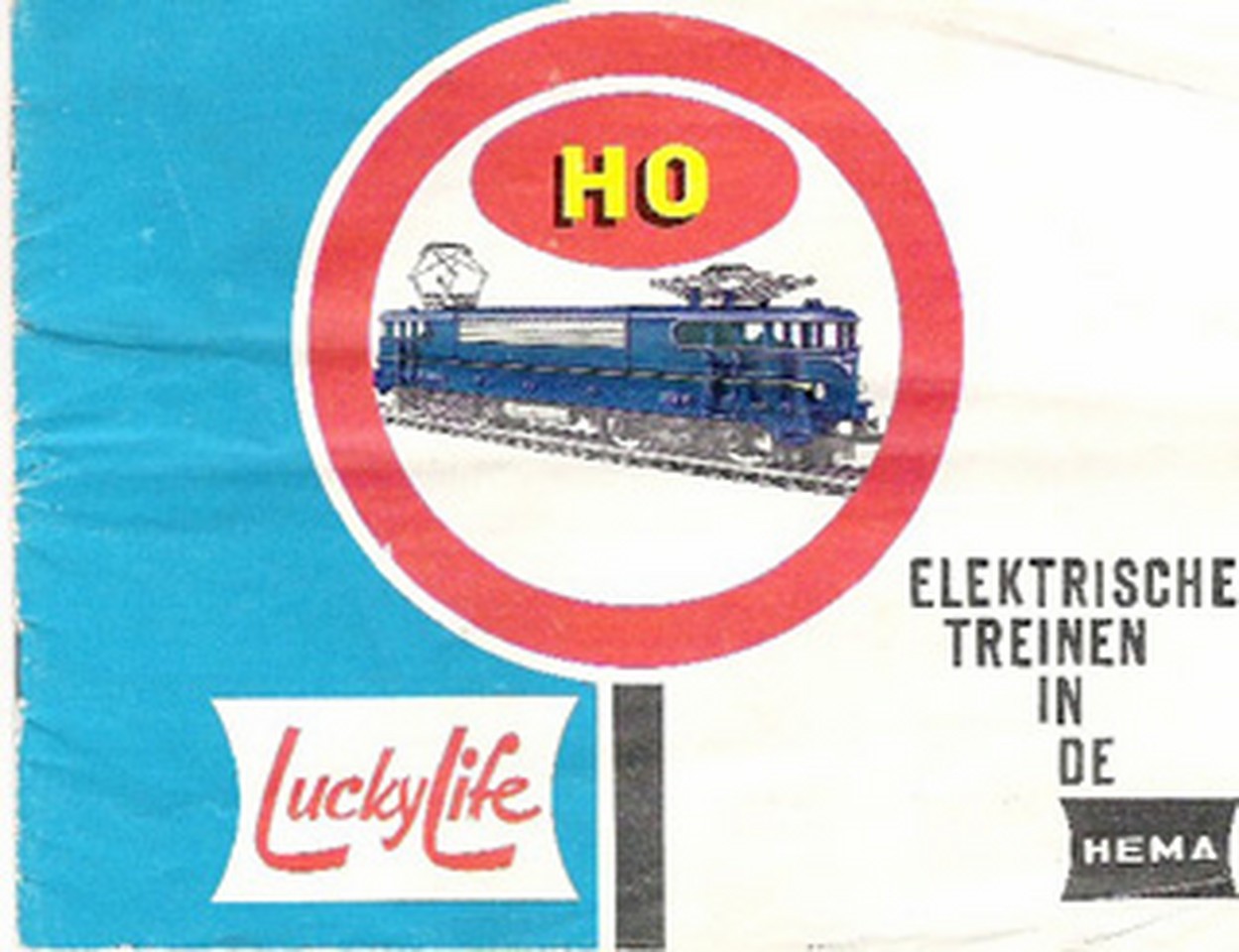
In 1961 a Dutch sale’s chain offers with its own brand Hema
a catalog of trains Flemish
In fact they are produced by Lima in Vicenza
though, until 1969, the Italian brand and the words “Made in Italy” never appear on boxes and packaging, and often, even under the frame of the vehicles are covered by pasted labels HEMA .

Since 1969 it says “Made in Italy”, but not “Lima”
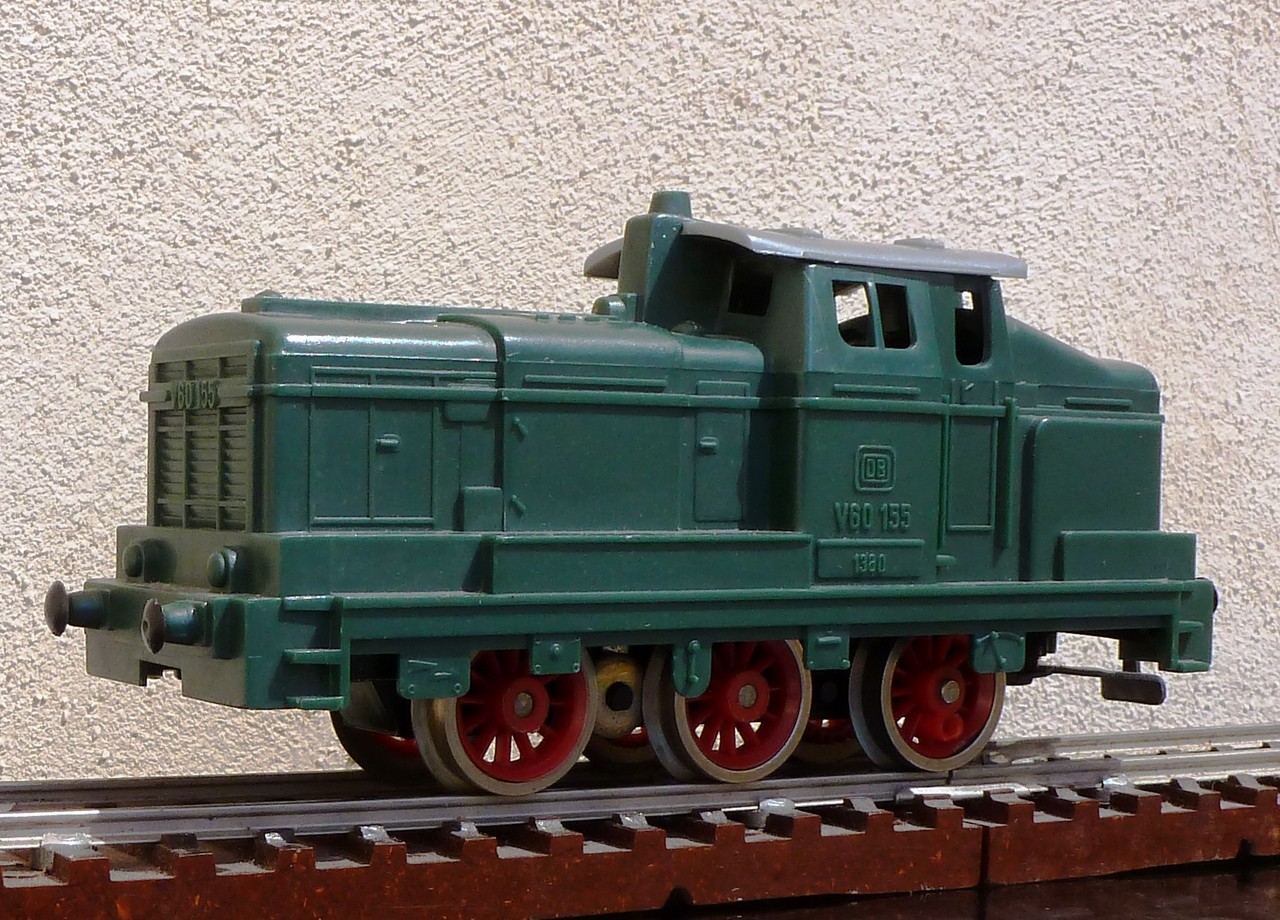
This situation lasted until 1980,
when he released his latest catalog HEMA rail
Of course also other brands, such as Fleischmann or Maerklin, produced in those years rail vehicles for this market, but we do not consider them as imported with their brand of origin and not produced in Belgium or Holland.
Starting from 1962 the company Distlertoy, newly established Belgian company, saves, from the closing of the historic German Distler, equipment and materials to produce trains in lithographed sheet.

Trains are cheap, to be sold in chain stores and supermarkets newborn .
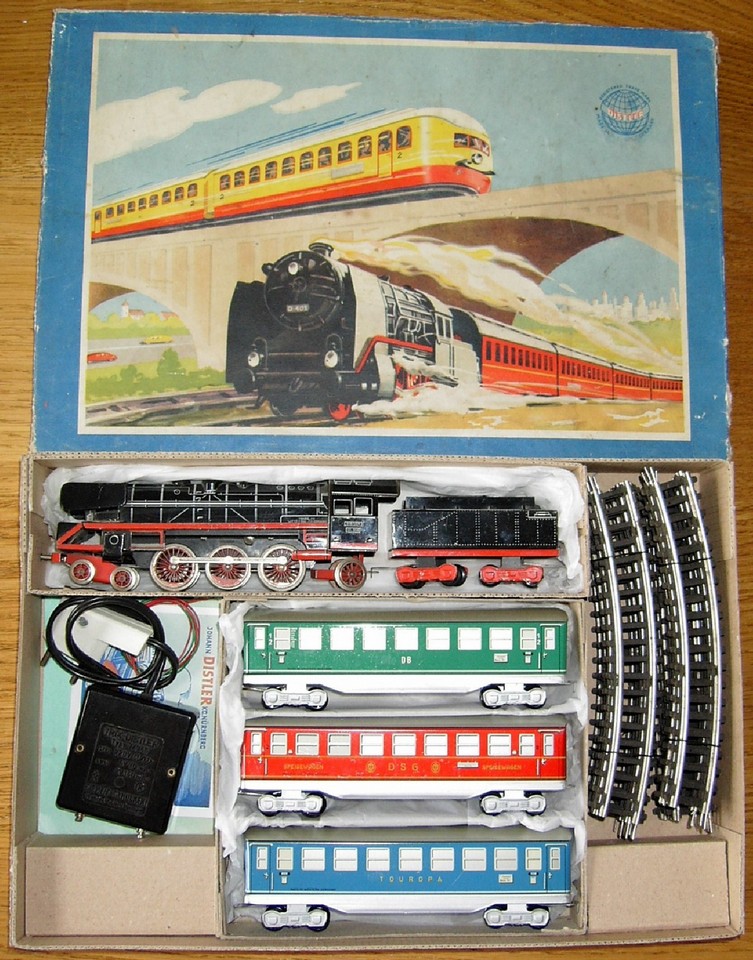
Cheap and equipment is already amortized, using binary ranching Trix or Fleischmann and operate from battery (4.5 volts),
but have little success and their ephemeral production ceased around 1965.
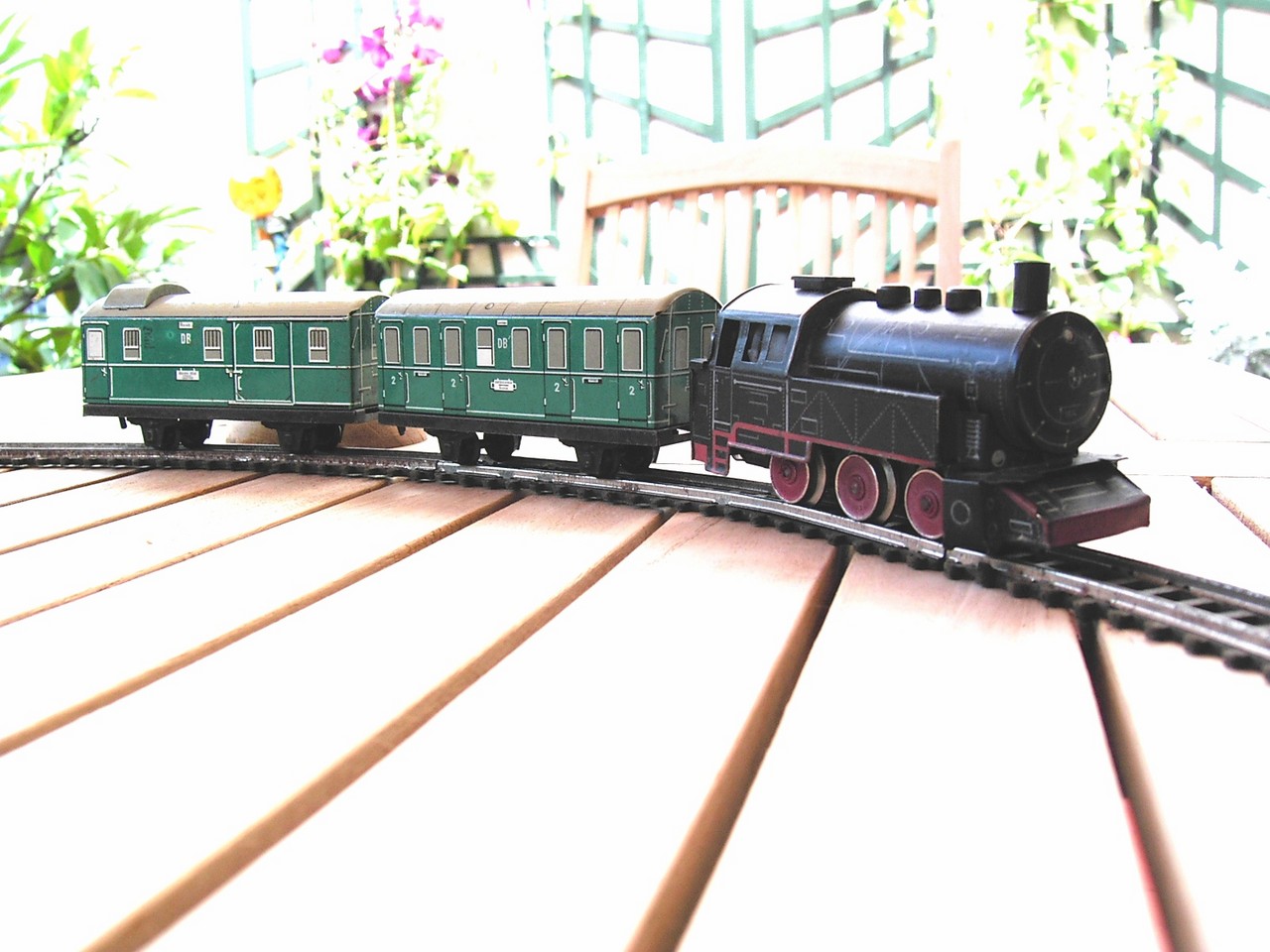
However, these are fascinating Flemish, although largely inspired Teutonic, with a range that extends from the steam engine, as the BR 80 and BR 01 to modern TEE of the time.
Before disappearing, at the end of 60s, Distlertoy offered trains in plastic.
Noblesse Van Dyik
It is part of the production of this period this package of so-called Tramways actually more like “Schienenbus” Germans equipped with pantographs to real tram.
This ephemeral package is now a genuine rarety.
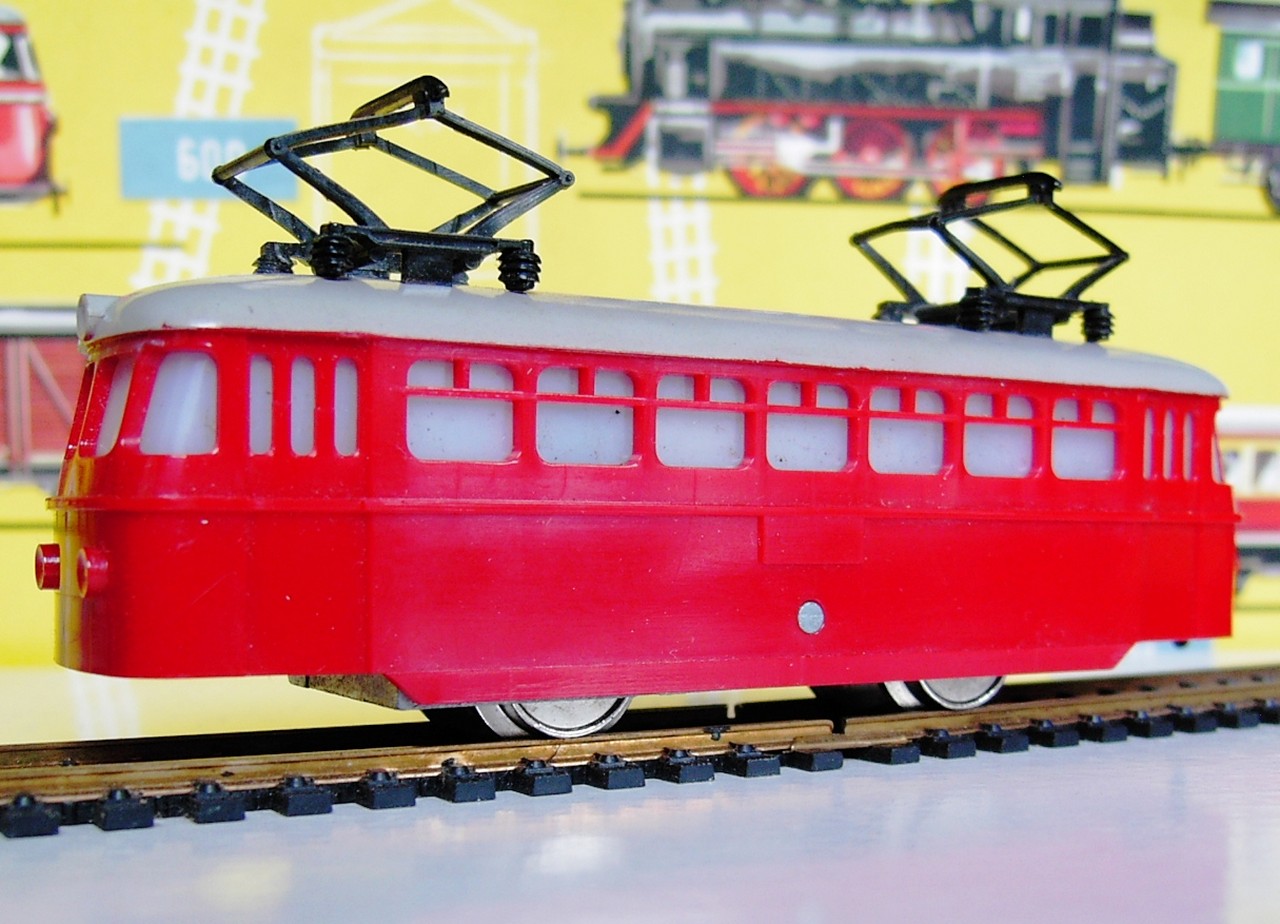
Always of the same period is the train mining or “Sandbahn”
with its tilting wagons derived Trix.
We must then wait more than 10 years to find new Flemish trains , but only handcrafted brass high level.
Back to Home Page
(@ April 11, 2015)
